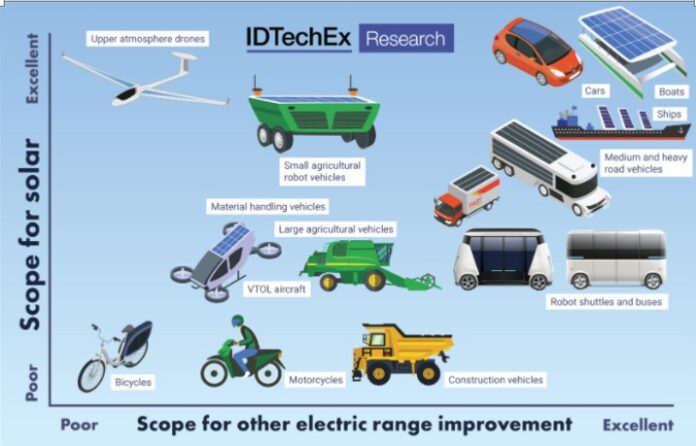The latest report from IDTechEx focuses on the possibility of seeing a 1,000-mile (1,600 kilometers) battery for electric vehicles (EVs). The development of extended battery range will be profound, changing our outlook on transitioning to EV technology. Imagine if you live in a city, you likely won’t have to charge your vehicle more than once every couple of months. And when you go on vacation you won’t have to be mapping out routes based on where recharge stations are located.
Another approach to extended-range vehicles is to add solar cells to the EV surfaces. Aptera, a California-based solar car start-up, is building golf carts that promise a range of 1000 miles. This is twice the range of current Tesla automobiles. In fact, some Tesla models can get up to 620 miles (992 kilometers). Lightyear, another EV manufacturer, has a family of solar cars that can approach a 500 miles (810 kilometers) range using extensive solar bodywork and efficient in-wheel motors. Tesla has plans to implement solar in future EVs capable of adding a kilowatt of power to its models. When feasible, Elon Musk even wants to add foldable and unfoldable solar panels that can be used to recharge batteries when the vehicle is parked. And finally, Hyundai has plans for an EV with a translucent solar roof.
If you think these innovations are a bit out there, check out these other range-extending technology ideas:
- Lighter battery materials to reduce vehicle weight by 50% while still capable of generating equal or greater amounts of energy than what current EVs produce. With batteries making up the greatest portion of the weight in current EVs, a lighter vehicle will travel much further with less wear and tear on other components such as the wheels, and brakes.
- For solar-powered EVs, switching to perovskite material panels and films will allow the photovoltaic surfaces to convert the energy from a wider spectrum of light into electricity for powering EVs by 10% or more.
- Transparent heater film on vehicle interiors to save up to 30% of inside energy requirements.
- Infra-red harvesting surfaces under vehicles to capture energy in the form of heat from ground sources particularly in the summer.
- Increasing battery density. For example, Volkswagen is targeting a 40% increase in output for its batteries in all EV lines by 2030.
- Popup wind turbines when a car is parked or at a stop to harvest energy.
- Tethered drones that convert wind to electricity. Don’t laugh, the U.S. Department of Defence is funding trials for this type of technology.
Not all of these ideas will convert into real products. But with some of them, the promise to extend EV range to the 1,000-mile goal should be workable within the decade.
For the bigger picture go to the IDTechEx report, “Electric Vehicles: Land, Sea and Air 2021-2041”. And for additional information please visit www.IDTechEx.com/










[…] there are two outstanding concerns: range anxiety which appears to be coming to an end, and the lack of an adequate charging infrastructure which […]